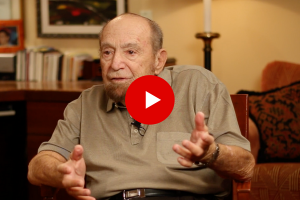Psychological Differentiation
What is Psychological Differentiation?
Psychological differentiation is an important aspect of self-development. As Dr. Robert Firestone writes in his book The Self-Under Siege: A Therapeutic Model for Differentiation, “In order for people to live their own own lives and fulfill their destinies, they must differentiate from destructive environmental influences.”
Dr. Firestone believes that a person’s true identity is affected throughout their lives by interpersonal experiences that either support or damage the development of his or her personality. In order for us to live our own lives and fulfill our own destinies, we must differentiate ourselves from destructive family and societal influences. Differentiating from negative influences and identities from our past allows us to become who we truly are, rather than following a prescribed identity from either our family or our society. To the extent that we are able to develop and sustain our own unique identities and follow our own unique desires, we will be able to live truly fulfilling lives.
So, you should ask yourself:
Whose life am I really living?
Am I basing my life on my own personal beliefs, values and desires?
By undertaking the project of differentiation, we are able to more fully become the unique individuals that we have the potential to be. By understanding the process of psychological differentiation, we can begin to separate ourselves from the chains of the past and lead the most individualistic and meaningful lives possible.
Watch this Whiteboard Video on Differentiation
The Four Steps of Differentiation
There are four key steps to psychological differentiation. The first steps involve becoming aware of the various ways we have been influenced by destructive individuals and experiences from our past. The next steps involve taking actions to break with these old identities in order to ultimately become our truest selves. As Dr. Firestone points out, “Becoming a differentiated person is a lifelong project.” So be patient and compassion toward yourself as you move through these steps.
Step 1:
The first step of psychological differentiation involves breaking with destructive thoughts and attitudes toward ourselves that we internalized based on painful early life experiences. We can start by identifying these negative thought processes, which Dr. Firestone calls the critical inner voice, that are harmful or negative toward the self. Some of these thoughts may seem positive at first (either self-soothing or self-aggrandizing), while others will seem hostile, self-hating, paranoid, or suspicious. Once we become aware of these “voices,” we can develop insight into the sources of these destructive thoughts. We can develop this insight by thinking about which specific individuals or experiences may have lead us to feel these negative ways about ourselves. Then we can try to answer back to these skewed thoughts in our own point of view. By learning to challenge this inner critic, we separate from the “parent” we’ve internalized, a step that may cause us anxiety but will ultimately free us to become who we strive to be.
Step 2:
The second step of differentiation involves recognizing and changing negative personality traits in ourselves that are an incorporation of the negative traits of our parents, caregivers, or other influential figures. Many individuals are surprised to find that, despite their best intentions, they often act in the same negative ways a parent did — reenacting the very actions or personality patterns that they swore they would never repeat themselves. Altering these unpleasant or toxic personality characteristics — addictions, vanity, phoniness, self-centeredness, a victimized orientation toward life, attitudes of superiority and contempt, among others – is a powerful way of saying goodbye to our past. It is important to be proactive about changing these negative personality traits without being self-hating or falling back into your critical inner voices. Understand that you came by these faults honestly and that you have the full power to change them.
Step 3:
The third step of differentiation involves looking into the psychological defenses we developed as an adaptation to the pain and distress we experienced growing up. To differentiate from the more childish aspects of our personality, we need to identify and then give up the patterns of defense we formed to deal with pain early in our lives. We need to recognize that the defenses we formed to protect ourselves as children often limit us in our adult lives. For example, if we were intruded on as children, we may feel excessively guarded as adults. If we were rejected as kids, we may feel distrusting in our relationships. People tend to cling to these defended ways of responding to others and remain emotionally trapped in cycles from their past. As adults, it’s important to give up the hope of ever filling the vast voids we felt as children. In order to become psychologically differentiated, we need to, in effect, say goodbye to our “child selves” and live fully as the adults we are now.
Step 4:
The final step of psychological differentiation involves developing our own values, ideals, and beliefs rather than automatically accepting the beliefs that we grew up with or those of our culture. We should strive to lead a life of integrity, according to our own ideals, in spite of social pressures to conform to the standards of others. We should resist influences that are oppressive or restrictive of individual human rights. It is also important to formulate transcendent goals, those that go beyond ourselves and our immediate family, and to take steps toward fulfilling these goals that give personal meaning to our life.
 For more information on differentiation, read The Self Under Siege: A Therapeutic Model for Differentiation by Dr. Robert Firestone, Dr. Lisa Firestone and Joyce Catlett, which focuses on the process of differentiation and provides examples from their clinical practices and their 35-year observational study of a group of normal individuals, their families and their children. In the book, individuals share their personal stories and their experiences, as they progressed through these four tasks, and the authors share their perspective on the therapeutic development.
For more information on differentiation, read The Self Under Siege: A Therapeutic Model for Differentiation by Dr. Robert Firestone, Dr. Lisa Firestone and Joyce Catlett, which focuses on the process of differentiation and provides examples from their clinical practices and their 35-year observational study of a group of normal individuals, their families and their children. In the book, individuals share their personal stories and their experiences, as they progressed through these four tasks, and the authors share their perspective on the therapeutic development.









So bad.i thought after 8 years of EMDR& 10 years of group therapy by a trauma specialist, I’d graduated past triggers or this entanglement with certain world atrocities.
Truth is I haven’t. I’m not necessarily happy that I’m not alone here, because I feel grief for anyone else who relates to the article, & even more grief and helplessness for people in actual, current trauma. But I do appreciate the article so much and literally am using the steps. Permission to live my own life..I like that.
This is helpful but honestly I feel that I will never be happy.
” So be patient and compassion toward yourself as you move through these steps. “
saying goodbye to childhood hopes seems like a riddle. i know i am an adult. i am 50. I haven’t got a clue what I want or care about. I’m alone. No country for old men etc etc. You are on your own. I get it. Knowing that really does not make any difference.
i love how you guys suggest a book that’s $50 on amazon. what a tremendous help.
[…] Differentiation refers to the process of striving to develop a sense of ourselves as independent individuals. In order to find ourselves and fulfill our unique destinies, we must differentiate from destructive interpersonal, familial and societal influences that don’t serve us. […]